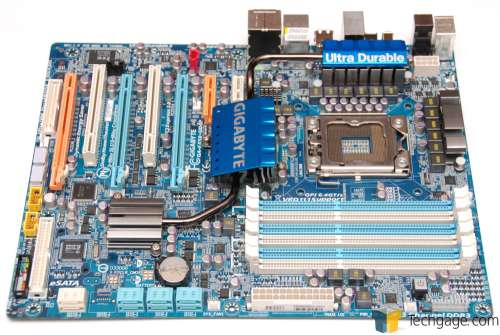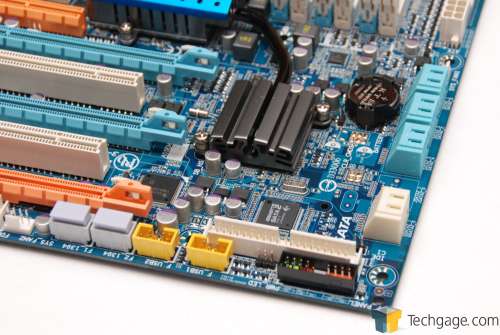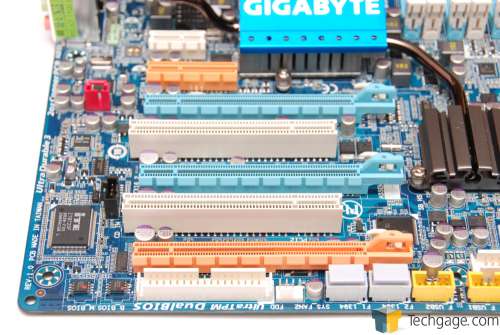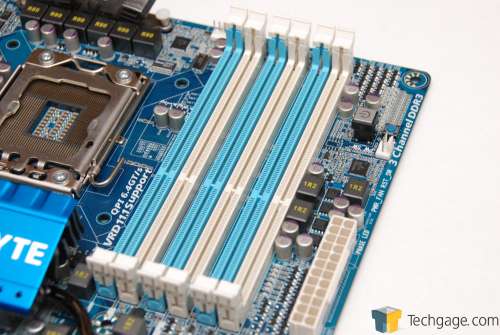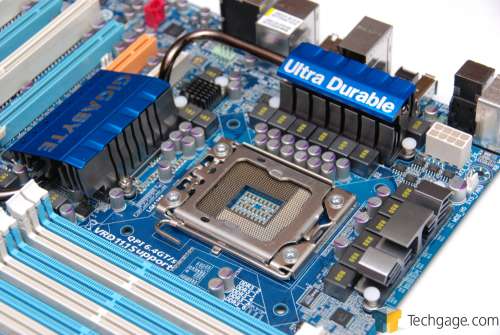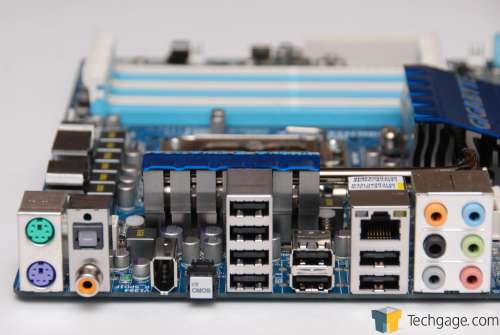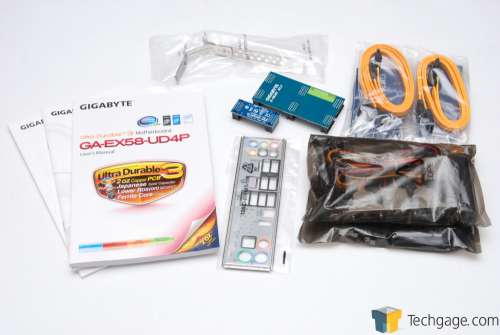- Qualcomm Launches Snapdragon 4 Gen 2 Mobile Platform
- AMD Launches Ryzen PRO 7000 Series Mobile & Desktop Platform
- Intel Launches Sleek Single-Slot Arc Pro A60 Workstation Graphics Card
- NVIDIA Announces Latest Ada Lovelace Additions: GeForce RTX 4060 Ti & RTX 4060
- Maxon Redshift With AMD Radeon GPU Rendering Support Now Available
Gigabyte EX58-UD4P
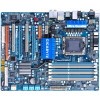
At CES earlier this year, Gigabyte showed off two new motherboards that promised both a great value and of course, good overclocking abilities. The EX58-UD4P was one of those, and we’ve now been able to put it to the test. We’re happy to report that as we had hoped, the board delivers on all fronts, and coupled with a reasonable price, it looks to be well-worth a look.
Page 1 – Introduction
Shortly after Intel launched their Core i7 processors, we posted a review taking a look at Gigabyte’s first motherboard to support the new CPUs, the EX58-UD5. At that time, we weren’t too sure what to expect from the competition, but despite that, we were more than satisfied by what the board offered, in both features and overclocking-ability.
Since that time, not too much has changed in the X58 space, but we do have course have many more models to choose from than ever before, and from a wide-variety of vendors. This past CES, one board to catch our eye was Gigabyte’s own EX58-UD4P. The main reason was because it was feature-packed, and was to sport an affordable price. Those two features remain intact with the launched model.
Before we jump into the specifics of the UD4P, I’ll briefly mention that if you are looking to build an i7 machine and would like to do so as cheaply as possible, another option is Gigabyte’s EX58-UD3R. This board is essentially a scaled-down version of the UD4P, but retails for just under $200, making it one of the most affordable offerings available. It’s worth taking a look if multi-GPU and overclocking aren’t that important to you.
Closer Look at Gigabyte’s EX58-UD4P
As mentioned above, the UD3R board is Gigabyte’s least-expensive X58 offering currently, but their UD4P doesn’t suffer from high-pricing either, at $260 (available for less through mail-in rebates at some e-tailers). But at that price, this is still a mid-range offering, so we should be able to expect features and performance typical of such boards.
Being part of their Ultra Durable series, the UD4P offers a slew of features that aim to deliver ultimate stability, incredible overclocking, great thermals and security anyone can be proud of. Noteable features include the 2oz of copper used in the PCB (this feature has also been carried over to their GPU line), a 12+2+2 phase power solution, Dual BIOS and much more. Essentially, Gigabyte wants to make sure their UD boards deliver everything you need, and they do a pretty fair job of that.
If you are familiar with Gigabyte’s motherboard offerings, then this one won’t come off as too much of a surprise. The color scheme is similar to their other EX58 boards, and for the most part, it’s one that will be liked or hated. I don’t mind it… the light hues are somewhat refreshing. From a component standpoint, the board lacks nothing. Aside from having eight S-ATA ports, there are six fan ports, allowing for pretty-much any type of air-cooling setup you could possibly want.
As you’d expect, most of the peripheral connectivity takes place at the bottom right-hand corner. Here are the eight S-ATA ports, along with the ATX chassis connectors, IDE connector, USB/FireWire connectors and also the BIOS battery.
Gigabyte proudly supports both dual and triple-GPU configurations on the UD4P. In a three-way configuration, the space is going to be extremely limited, with the bottom GPU likely to hang over the edge of the board, so if you are planning to go that route, make sure your chassis has sufficient spacing. Aside from the PCI-E 16x slots, we also have two legacy PCI slots in addition to a PCI-E 4x and 1x. Don’t expect to fit much in the 1x slot though, except for an incredibly short card.
Like most other X58 boards, this one supports up to 24GB of DDR3 memory, but I’m willing to bet most will stick to a more modest 3x2GB configuration. Found beside the DIMM slots are on-board power and reset switches, for those running the machine outside of a chassis.
As mentioned earlier, this board features a robust power solution in the form of a 12+2+2 phase configuration. I’m unsure what the extra phases do, but if I had to guess, two are devoted to the QPI bus while the other two are devoted to the memory. Gigabyte prides themselves on being overclocking-friendly, so it’s no surprise to see such a configuration.
For I/O connectivity, the board offers two PS/2 ports, S/PDIF and 7.1 audio, FireWire, eight USB and a single LAN. There’s also a CLR CMOS button available in case an overclock happens to disagree in the worst possible way.
In way of accessories, Gigabyte includes manuals and the driver CD, an I/O protector, SLI bridge connectors, an E-SATA add-in peripheral, S-ATA and IDE cables, and also a bracket used to secure your SLI bridges (thanks to a reader for pointing that out in our UD5 review).
When all said and done, the UD4P lives up to what the Ultra Durable series is all about, and nothing seems to be lacking. Aside from the board’s features, the accessories included don’t disappoint, so your new build shouldn’t be lacking anything. So how about the BIOS? Don’t worry, that’s up next.
Support our efforts! With ad revenue at an all-time low for written websites, we're relying more than ever on reader support to help us continue putting so much effort into this type of content. You can support us by becoming a Patron, or by using our Amazon shopping affiliate links listed through our articles. Thanks for your support!




